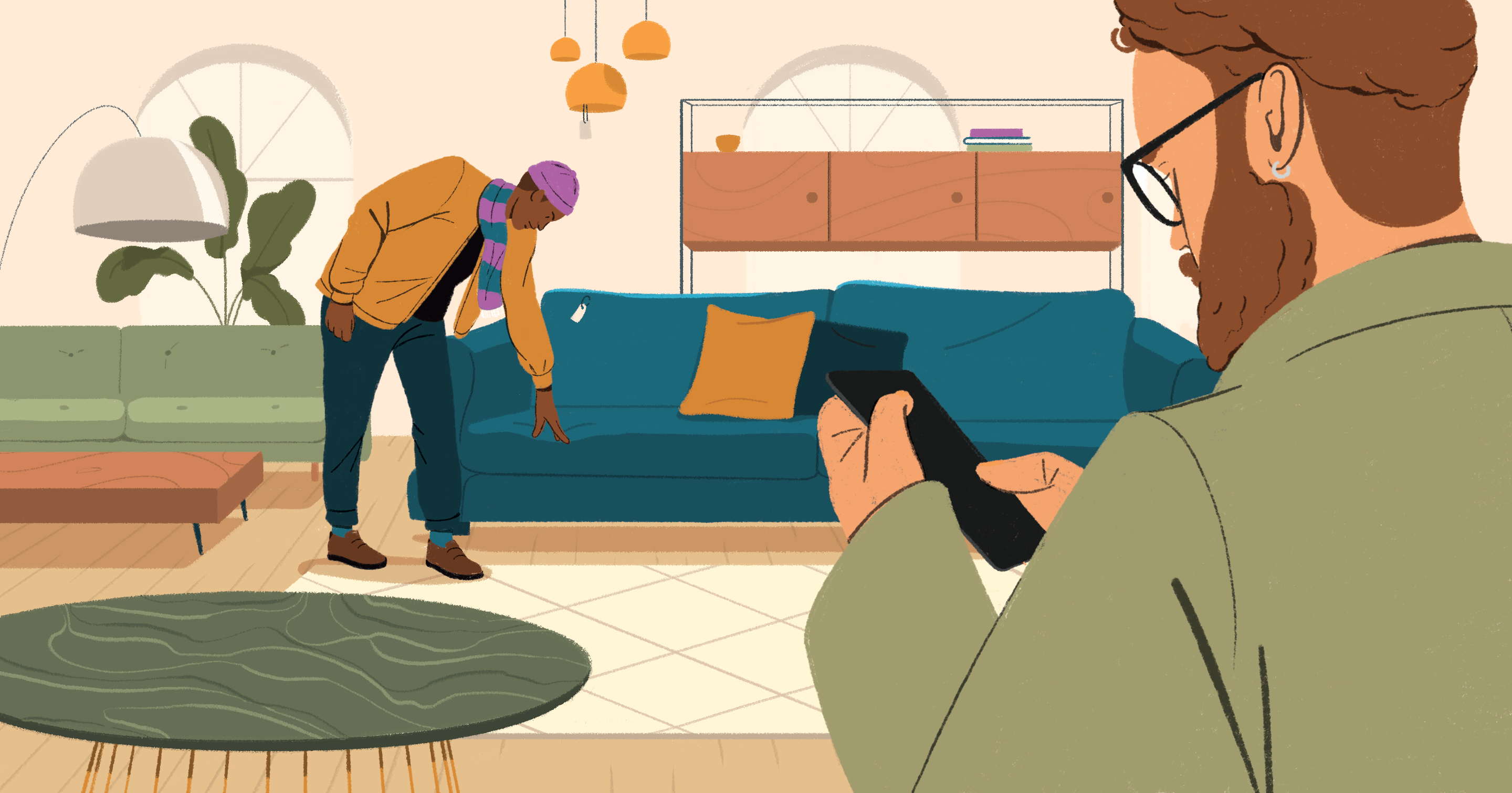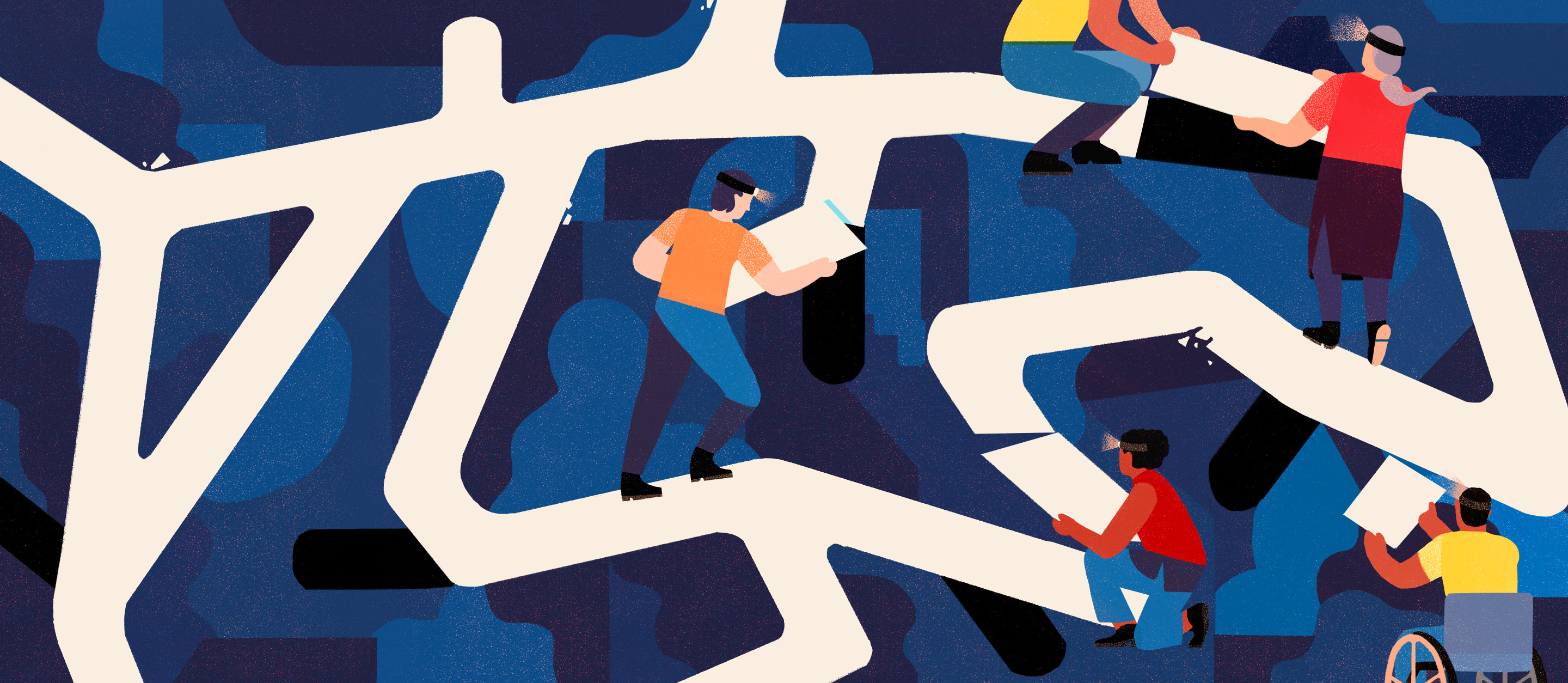The possibilities business

When the public sector falls short, should business step in? That question was top of mind for Carlos Rodríguez-Pastor, President of Intercorp, a Peruvian conglomerate with an expansive range of companies from banking to education to health care to retail.
A decade ago, Rodríguez-Pastor asked IDEO to help him realize a unifying, human-focused, mission: to leverage the power of its business to uplift Peru’s middle class.
Beginning with a single engagement in 2011, IDEO and Intercorp’s work together grew into an unusual entanglement of organizational cultures, brimming with stories of mutual influence.
Since then, IDEO’s work with Intercorp has touched more than two dozen different companies across the group as the business grew from $2.9 billion in revenue in 2011 to $8.5 billion in 2021. Intercorp now employs more than 80,000 people and its revenue represents more than 3.5 percent of Peru’s gross domestic product.
Yet the greatest change has been in the minds of Intercorp’s leaders. In looking back on 10 years of collaboration, a key theme emerges: Working with IDEO on dozens of projects has taught Intercorp’s teams new capabilities, and that has snowballed into a new way of thinking for this broad-reaching company.
The following oral history recounts how the organization has transformed over the last decade through a series of leaps: imagining a more human-centered future, using digital experiments to gain confidence, and changing mindsets across the company to ensure resilience over the next decade.
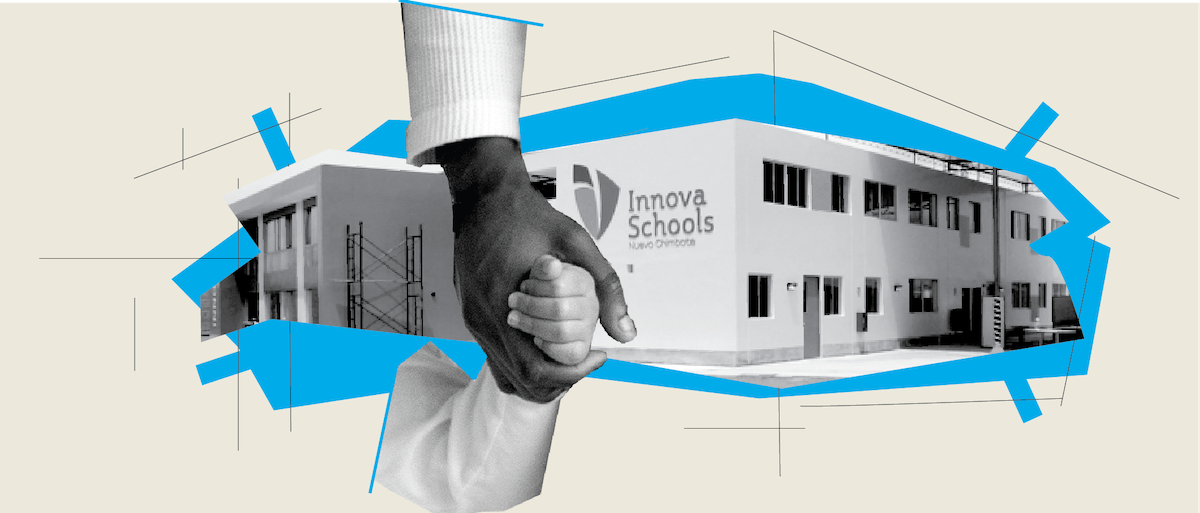
I. Building belief: I can see what we need to do
Carlos Rodríguez-Pastor was born in Peru, and educated in the United States after his father became a political exile in 1969. The family returned in the 1990s, and Rodríguez-Pastor’s father began building a banking business, which became known as Interbank. When he died suddenly in 1995, Rodríguez-Pastor himself became the bank’s chairman, a position he used as a beachhead for growth in Peru’s liberalizing economy. With the founding of Intercorp in 1997, Rodríguez-Pastor charted an audacious path beyond banking, with its unifying force being the well-being and prosperity of Peruvians. It was a far-reaching ambition that bridged people and profit—but to pull it off, he needed help.
Rodríguez-Pastor asked IDEO for help with two distinct projects: a new school system that would be affordable for the emerging middle class; and a new customer experience for Interbank, Intercorp’s flagship bank.
Carlos Rodríguez-Pastor: “We had a big goal—to make Peru the best place to raise a family in Latin America—which was both a moral obligation and an opportunity. We saw that if you make the pie bigger, then we’re going to help a lot of people, and our businesses are also going to do better. Our education system was struggling and we wanted to help change it."
Sandy Speicher, CEO of IDEO: “It was really a brave moment, both for Carlos and for us. Carlos knew how important it was to create opportunities for people by securing their educational foundation. But Peru, at the time, was one of the lowest ranked countries on an international survey of education systems."
The new school system, known as Innova Schools, was a success on its own terms: In 2020 it enrolled 42,000 students across 68 locations in 3 countries (Peru, Mexico, and Colombia); boosted 4th grade students’ math and reading test scores 2x compared to local public schools; and saw 99 percent of graduates go on to higher education or actively prepare for college. For Intercorp and IDEO, this formative project suggested broader possibilities—for organizational change across Intercorp, which could in turn inspire societal change across Peru.
Interbank presented a different type of challenge. Peru’s history of political instability had left a consumer banking environment controlled by security concerns. IDEO and Intercorp prototyped an experimental space called Interbank Explora, which brought the staff out from behind bulletproof glass and into the middle of the banking hall, making for a more welcoming experience.
Luis Cilimingras, Partner at IDEO: “We realized the intimidating environment wasn't welcoming for customers, and also meant that branch employees and managers were out of touch with the customer's day to day experience. We asked, ‘How could you redesign the banking experience so people would feel good about going inside?’”
Luis Felipe Castellanos, CEO of Interbank: “Before, everything was done on the basis of surveys or a focus group, at the most. IDEO gave us a different way to understand our clients, and get involved in their day-to-day lives. We almost lived with them."
Luis Cilimingras: “With the new branch experience in place, Interbank’s employees told us ‘Now some of my customers kiss me goodbye!’”
In Interbank Explora’s first sixty days, sales increased by 30 percent, customer satisfaction improved, and profitability grew by 32 percent. Building on that success, the changes were rolled out across the bank’s 2,200 branches.
Luis Cilimingras: “The investment and the participation of the leaders in the process made them realize: ’we need to be working in this way.’ They were just immediately converted.”
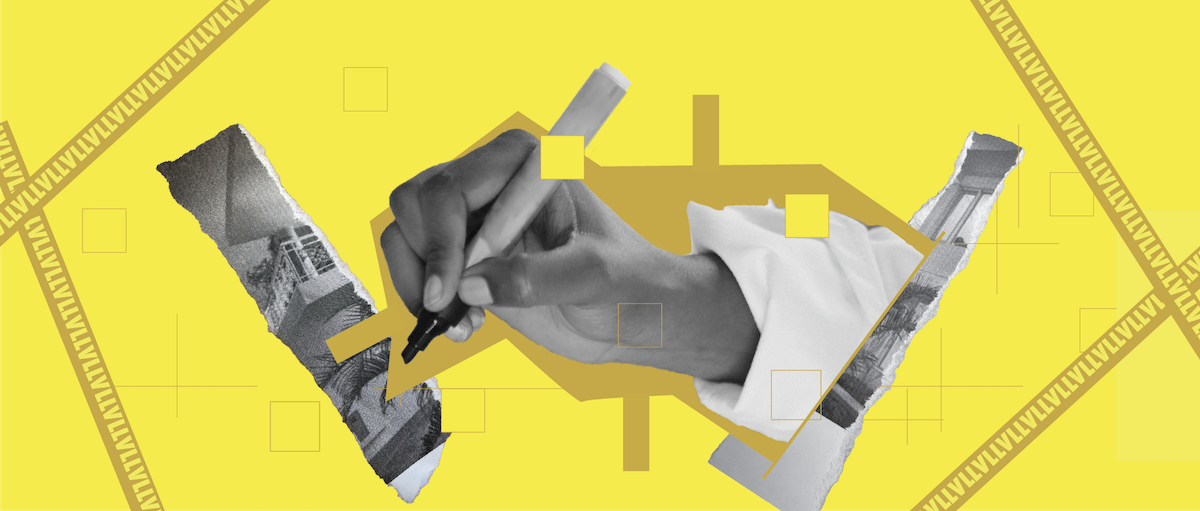
II. Launching an innovation engine: We can do this
Intercorp and IDEO began considering ways to extend their collaboration across the group—meaning to more of Intercorp’s diverse holdings—by building an internal innovation lab in Lima.
Luis Cilimingras: “Carlos [Rodríguez-Pastor] was like, ‘Okay, first time, with Innova: Lucky! Second time, with Interbank: It seems I have a partner!’ Intercorp saw us as somebody who can help them imagine the future, who is going to help drive change.”
In 2012, Hernan Carranza, then a young executive at Casa Andina, Intercorp’s hotel company, spent a summer working in IDEO’s Munich studio. Afterwards, he pitched Carlos Rodríguez-Pastor on the idea of an in-house digital innovation shop. That idea evolved into building a human-centered design team that could work across Intercorp’s companies. Rodríguez-Pastor seized on the idea, and made Carranza Intercorp’s first Chief Innovation Officer.
Hernan Carranza, Chief Innovation Officer of Intercorp: “That's when we said, ‘Hey, why don't we have a design team—a mini-IDEO—in Lima?’ That would put it much closer not only to the Peruvian family, which is who we design for, but also to the executives of the Intercorp group, who are the people with whom we co-create the solutions for the families.”
Luis Cilimingras: “We were bringing a new set of techniques and approaches to solving problems and they were bringing operational expertise and local talent who understood the context in which we were working. But these were far from what I had imagined as the 'ideal conditions' to set up an innovation team. It was jarring to realize how much I had to learn to be effective. With a product mindset, you have this vision of what the end result will be like. I had to scrap that and embrace what I didn’t know as the key ingredient for success.”
Hernan Carranza: “If Intercorp and IDEO had a child, that would be La Victoria Lab. But even a love child isn’t easy! We found a way to have our own voice that is authentic to us. But what we conserve are the foundations of IDEO’s approach: being highly experimental, being truly curious, being intuitive. All those mindsets that we learned from IDEO are the cornerstone of what we do.”
Watch "It's Up to Us", a short film about IDEO's 10-year partnership with Intercorp and how it transformed the organization.
La Victoria Lab (LVL) opened in 2014 in a converted house a few blocks away from Intercorp’s headquarters. Their first project was a deep ethnography of the Peruvian middle class, presented in a way that would engage executives across Intercorp.
Maria Paula Loayza, Portfolio Lead at La Victoria Lab: “We turned our own office into a small exhibition, so people could walk around and experience the research, as if they are dropping into someone’s house.”
Luis Cilimingras: “We invited leaders from across Intercorp, and we shared these stories with them. And that built La Victoria Lab’s brand within Intercorp—you can come to us when you have a human problem. Don't come to us with an efficiency problem. Come to us when you have something that has a deeply human need.”
In its first two years, La Victoria Lab grew to over 20 designers and launched multiple initiatives across Intercorp with a single objective: to build belief and confidence in their ability to design impactful services and experiences for Peruvian families. Given the vast scale of the conglomerate, this early work was just a start, but it was consequential in its ability to inspire Intercorp’s leaders.

III. Unleashing a digital transformation
With La Victoria Lab on its feet, its designers homed in on a “theory of change,” a method by which their small team could create work that inspired innovation across Intercorp. For years, Rodríguez-Pastor had been pushing for a company-wide digital transformation, but there was little progress. The businesses had a vestigial brick-and-mortar mentality and didn't see digital as something that would take hold in Peru for another decade. LVL saw this as their challenge: to become a hotbed of digital experimentation, executed in a way that built confidence and capability across Intercorp. Conceived to be highly visible, this category of projects became known internally as “beacons”, digital products whose design and launch would convey to the organization what it needed to change in order to scale digital ways of working.
Maria Paula Loayza: “The beacons were conceived to shine back to the organization everything that needed to change.”
Hernan Carranza: “We were not thinking of ourselves as the scalers of innovation. We were more like igniters. We were always like, ‘how do we inspire the leadership?’"
Maria Santolaria, Program Director at IDEO: “Our thesis was that by injecting something—a team that worked differently, or a digital product that was built and launched in a different way—the organization could mimic that behavior and change organically.”
The most popular of the early beacons were for Inkafarma, Intercorp’s consumer pharmacy chain, and Interseguro, their insurance company. Inkafarma’s project became a model across Intercorp for a digital-first strategy. By making it seamless and convenient for Peruvian customers to get medications delivered to their door, Inkafarma’s mobile platform predicated many of the features that would become essential during the COVID-19 pandemic. The app now drives up to 20 percent of Inkafarma’s business in urban areas.
Hernan Carranza: “In creating Inkafarma’s delivery app, which considered the needs and pain points of the consumer first and foremost, the team started designing and implementing on the fly, with the goal of putting functional products in the hands of users—in order to capture real reactions.”
Maria Paula Loayza: “At first, everybody at Intercorp was kind of looking at us weirdly, because what we were putting in the hands of consumers was crude. But we were able to apply our learnings as we went, and show how these small projects could be like proof points—prototypes that build confidence and begin the complex process of transforming organizations.”
Patricia Conterno, VP of Digital and Analytics at Interseguro: “Interseguro was not then a company centered on the user. When we developed a new product, we just did what we thought was right and hoped people liked it. Our beacon with LVL helped change that. Now we're constantly experimenting, testing with users, and trying to solve any friction they might have. To do so, we’ve now put 15-20 percent of employees in digital transformation roles. Once we launch a product, it is never finished.”
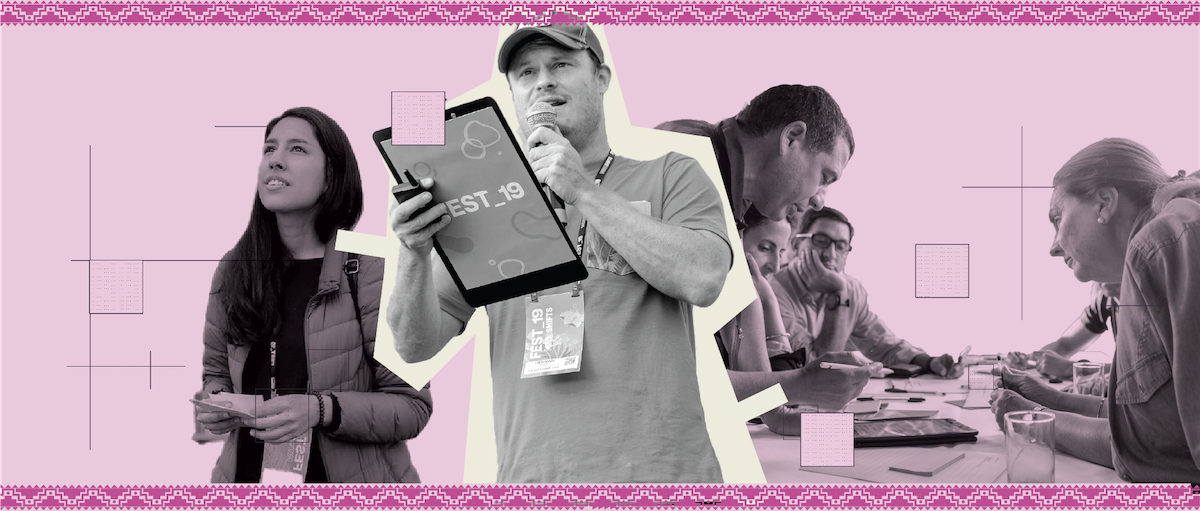
IV. Changing mindsets: This is us now
As La Victoria Lab’s reputation grew within Intercorp, IDEO’s role shifted. Intercorp had the ability to tackle core business opportunities in-house, so IDEO turned to guiding critical, strategic programs (like climate change and DEI initiatives); industry deep dives in sectors like health care; and continued support for leaders as they embraced new mindsets and ways of working.
Hernan Carranza: “A specific behavior we developed with IDEO is what we internally call ’tunking,’ which is when someone leading a creative project looks to others for honest feedback. I remember Luis Felipe Castellanos, the CEO of Interbank, once called me and said, ’Hey, can you send me six, seven more tunkeros to look at and tune my five-year vision?’ I thought that was fabulous. It's a sign that this leader is becoming a more vulnerable person, a more open leader who wants to listen to other perspectives.”
Luis Felipe Castellanos: “Leadership is not about having all the answers, it's about having the right questions. Working with IDEO has made me a much more human leader, focused on understanding the human being behind all of our solutions and all of our offerings.”
Fernando Zavala, CEO of Intercorp: ”What IDEO and La Victoria Lab have done is to permanently push us to think differently, to open our minds, to confront our ideas and, based on that confrontation, to get the best out of it.”
Hernan Carranza: “IDEO infected us with this little bug of permanent curiosity. To be constantly learning all the time—but, even more importantly, constantly unlearning. For Intercorp’s leaders, La Victoria Lab has become a stone in the shoe, always looking to discomfort, to challenge, and to take solutions to the next level."
After a decade, IDEO and Intercorp have come to an unusual understanding of what they have most meaningfully created together: not projects and businesses, but people and culture. It has been a transformation not only of design and efficiency, but also of mindset and approach.
Hernan Carranza: “I think my main learning in this last decade is that the transformation of a conglomerate of 80,000 people starts with the transformation of oneself as a leader. If you are able to start transforming your mental model, that makes another leader, another leader, and leadership begins to cascade.”
Sandy Speicher: “They’ve built this massive organization of learning. They’ve taken this model that we designed with them, and built an organization that continuously learns, and continuously designs, and continuously evolves.”
Carlos Rodríguez-Pastor: “Ten years into our relationship with IDEO, Intercorp is a totally different company. We are a much more customer-centric company. I think we have more empathy. We want to become the best place to raise a family in Latin America. I think that's achievable within the next 10 years. It's really up to us.”
Illustrations by Stephanie Sizemore
Words and art



Subscribe

.svg)








